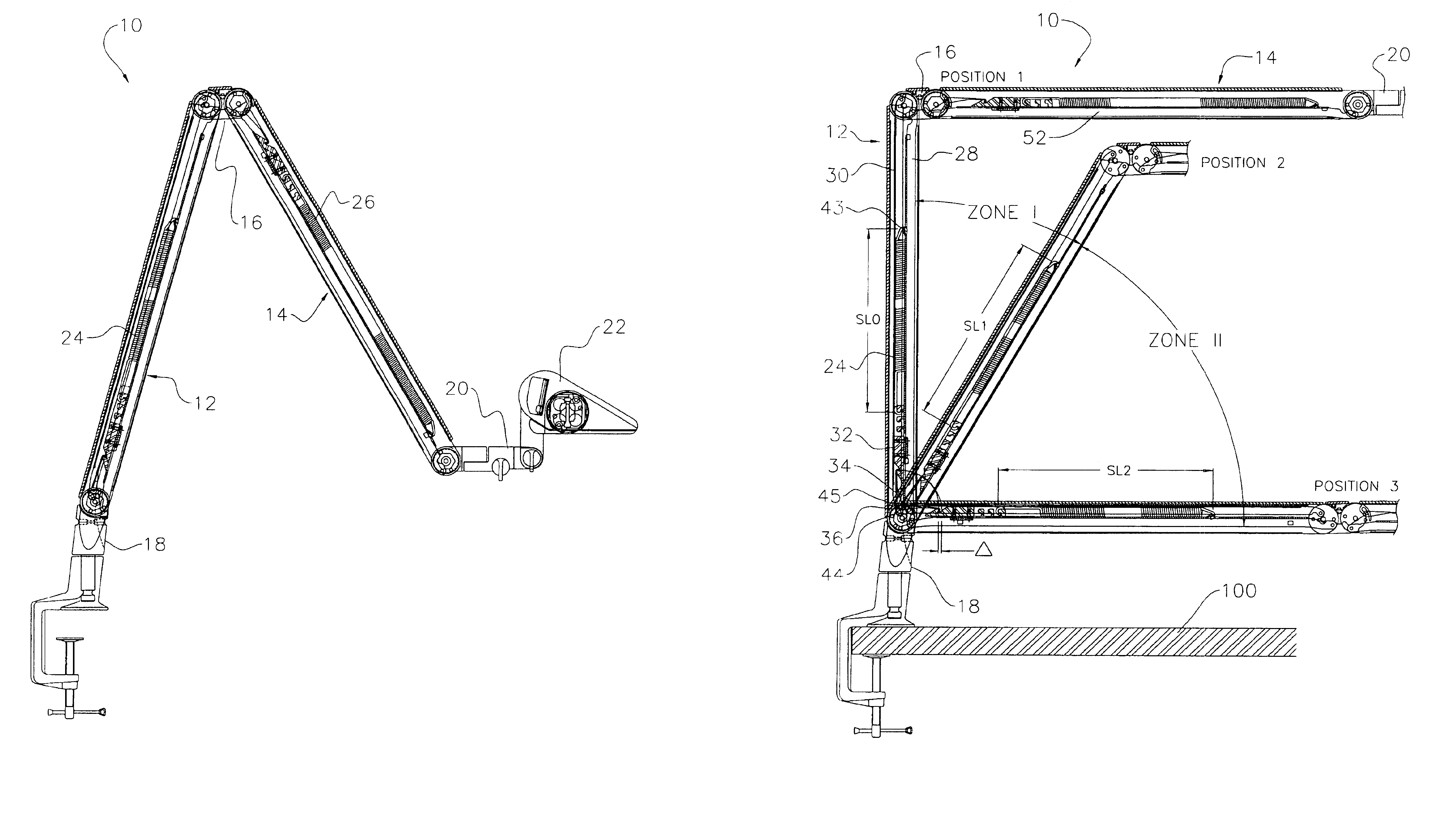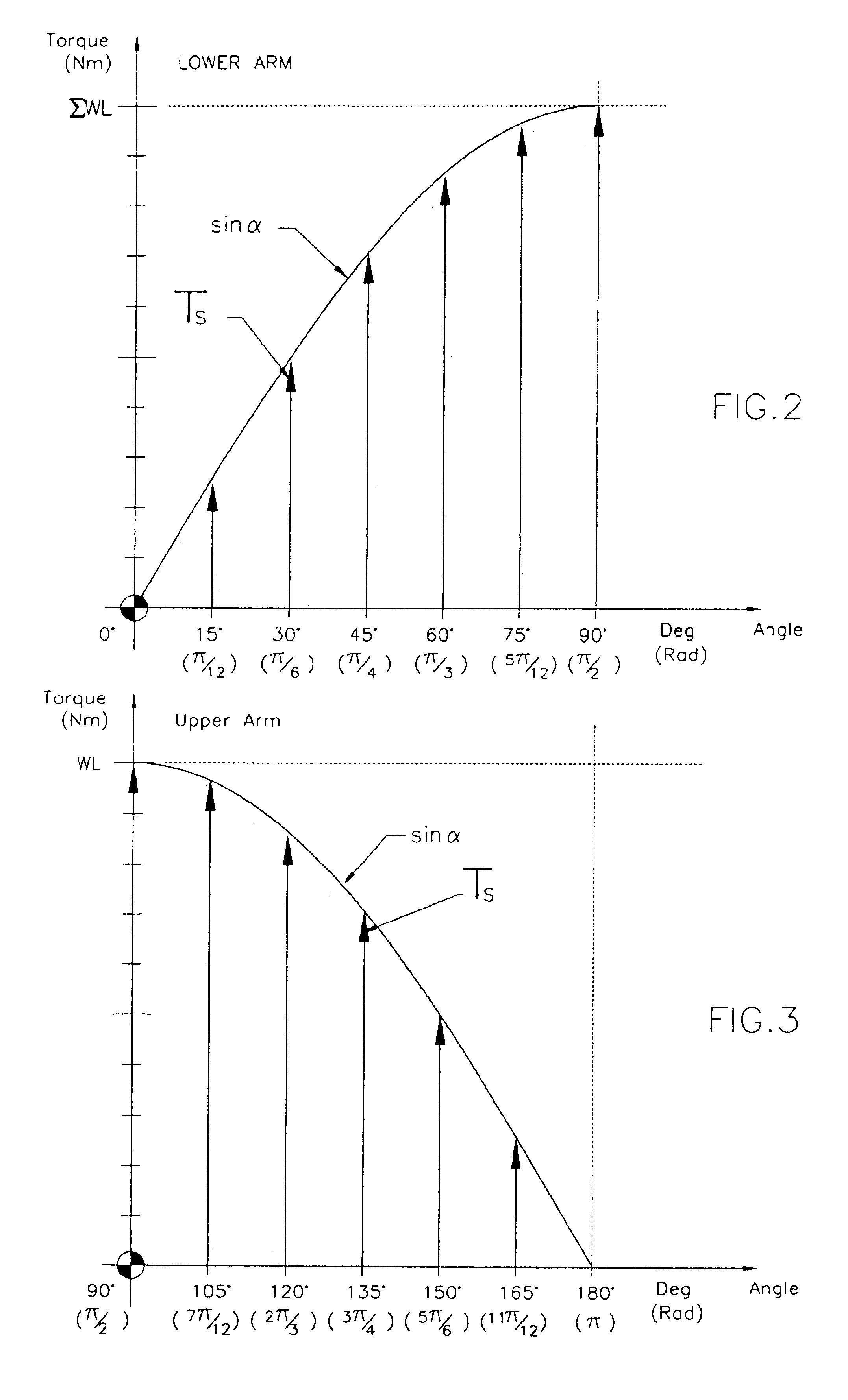Equipoise arm assembly
a technology of equipoise and arm, which is applied in the direction of machine supports, lighting and heating apparatus, and support devices for supporting devices, etc., can solve the problems of difficulty in accommodating the changing moment arm, the resistive force required to retain it in equipoise condition, and the inability to achieve such an ideal-performing mechanical arm arrangemen
- Summary
- Abstract
- Description
- Claims
- Application Information
AI Technical Summary
Benefits of technology
Problems solved by technology
Method used
Image
Examples
Embodiment Construction
[0040]As with many inventions, the present invention for an equipoise arm assembly can assume a wide variety of embodiments. However, to assist those reviewing the present disclosure in understanding and, in appropriate circumstances, practicing the present invention, certain exemplary embodiments of the equipoise arm assembly are described below and shown in the accompanying drawing figures.
[0041]Looking more particularly to the drawings, an exemplary equipoise arm assembly is indicated generally at 10 in FIG. 1. There, the exemplary equipoise arm assembly 10 is founded on a first, lower support arm 12 that is joined to a second, upper support arm 14 by a middle joint 16. More particularly, the lower support arm 12 has a proximal end retained by a lower arm joint 18 that supports the equipoise arm assembly 10 relative to a support structure (not shown) and a distal end coupled to the middle joint 16. The upper support arm 14 has a proximal end coupled to the middle joint 16 and a d...
PUM
 Login to View More
Login to View More Abstract
Description
Claims
Application Information
 Login to View More
Login to View More - R&D
- Intellectual Property
- Life Sciences
- Materials
- Tech Scout
- Unparalleled Data Quality
- Higher Quality Content
- 60% Fewer Hallucinations
Browse by: Latest US Patents, China's latest patents, Technical Efficacy Thesaurus, Application Domain, Technology Topic, Popular Technical Reports.
© 2025 PatSnap. All rights reserved.Legal|Privacy policy|Modern Slavery Act Transparency Statement|Sitemap|About US| Contact US: help@patsnap.com



